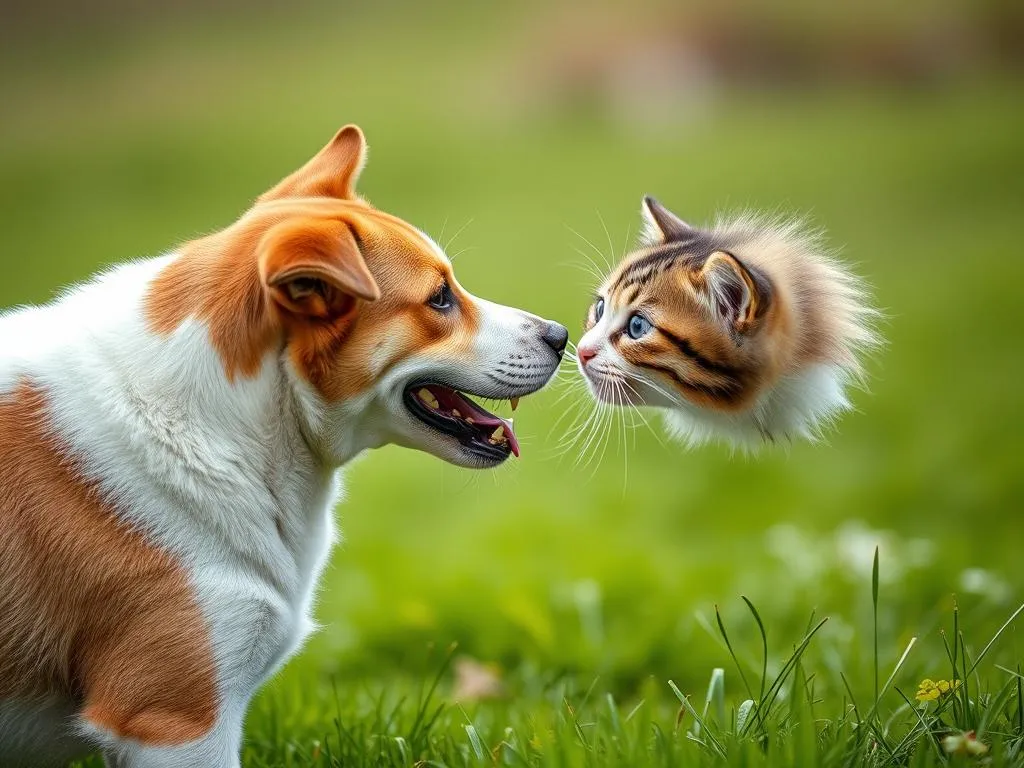
Introduction
Introducing a hyper dog to a cat can be a daunting task for pet owners. The energetic nature of a hyper dog can lead to misunderstandings and stress for both pets. However, with the right approach, you can create a peaceful environment that benefits both your dog and cat. A harmonious household with both pets can lead to a richer, more fulfilling life for you and your furry companions. This guide will provide you with the tools and techniques needed to successfully introduce a hyper dog to a cat, ensuring a smooth transition for all involved.
Understanding Pet Personalities
Overview of Dog and Cat Behaviors
When considering how to introduce a hyper dog to a cat, it’s essential to understand the typical behaviors exhibited by both species. Hyper dogs are often characterized by their excessive energy, constant need for attention, and playful antics. They may jump, bark, or chase, which can be overwhelming for a more reserved cat.
On the other hand, cats have their own set of natural instincts. They tend to be more independent and cautious, often preferring to observe before engaging. A cat’s instinct may prompt it to retreat when faced with an overly enthusiastic dog. Understanding these inherent behaviors is crucial in facilitating a successful introduction.
Assessing Your Dog’s Temperament
Before introducing your hyper dog to a cat, it’s important to assess your dog’s temperament. Look for signs of hyperactivity such as excessive barking, jumping, or difficulty settling down. Additionally, consider whether your dog has previously interacted well with other animals. Identifying your dog’s triggers—such as loud noises or sudden movements—can help you manage their behavior during the introduction process.
Assessing Your Cat’s Temperament
Cats can display a range of emotions, including anxiety and aggression, especially in new situations. Signs of anxiety in cats may include hiding, excessive grooming, or vocalizing more than usual. Understanding your cat’s comfort zones, such as preferred resting spots or areas to hide, will help in creating a safe environment during the introduction. Gauge how your cat reacts to new situations and adjust your approach accordingly.
Preparing for the Introduction
Creating a Safe Environment
Creating a safe environment is critical when learning how to introduce a hyper dog to a cat. Start by establishing separate spaces for your dog and cat. This separation allows both pets to acclimatize to each other’s scents without direct contact. Setting up a safe room for your cat—equipped with its litter box, food, and water—is essential.
Using baby gates or barriers can help establish boundaries, allowing each pet to see and sniff each other without the risk of direct confrontation. This initial separation also provides a sense of security for your cat, who may feel overwhelmed by the dog’s energy.
Tools and Supplies Needed
Having the right tools and supplies can make the introduction process smoother. For your hyper dog, use a leash or harness to maintain control during initial introductions. In some cases, a muzzle may be necessary if your dog tends to get overly excited and could pose a risk to the cat.
For your cat, ensure there are scratching posts and elevated spaces available. Cats often feel safer when they have the option to climb or perch up high. Additionally, keep treats and toys on hand for positive reinforcement during interactions.
Gradual Desensitization Techniques
Gradual desensitization is a key strategy in helping your pets get used to each other. Start by introducing the scent of the cat to your dog. You can do this by rubbing a cloth on the cat and allowing your dog to sniff it. Conversely, let the cat sniff a cloth that has been in contact with the dog. This method allows both pets to become familiar with each other’s scents without direct contact.
Additionally, play calming music or use pheromone diffusers in the areas where your pets spend time to help reduce anxiety.
The Introduction Process
First Meetings: Controlled Environment
Once both pets have had time to acclimate to each other’s scents, it’s time for the first meeting. Choose a controlled environment, such as a room with plenty of space for both pets. Keep your dog on a leash for better control, and allow your cat to roam freely. Monitor your dog closely to prevent them from becoming overly excited.
Start by allowing the pets to see each other from a distance. Gradually decrease the distance between them while keeping the dog calm. If your dog becomes too hyper or starts barking, redirect their attention with treats or toys.
Positive Reinforcement Strategies
Positive reinforcement is crucial during the introduction process. Reward both your dog and cat with treats when they display calm behavior. Praise and affection can also go a long way in reinforcing positive interactions. Recognize and reward even the smallest successes, such as your dog sitting calmly or your cat approaching the dog without fear.
This approach not only encourages good behavior but also helps both pets associate each other with positive experiences.
Reading Body Language
Understanding body language is essential in determining how each pet is feeling during the introduction. For dogs, signs of stress may include excessive panting, whining, or a tucked tail. Cats may show their discomfort through flattened ears, hissing, or a swatting motion. Knowing when to separate the pets is vital; if either animal shows signs of aggression or extreme fear, it may be best to separate them and try again later.
Managing Interactions
Gradual Increase in Exposure Time
Once the initial introductions have been successful, you can begin to gradually increase the time your pets spend together. Start with short sessions and slowly extend the duration as both pets become more comfortable. Pay attention to their behavior during these interactions, and be mindful of any signs of stress or discomfort.
Supervised Playtime
When both pets seem ready, you can introduce supervised playtime. Choose games that encourage positive interactions, such as fetch for the dog or using a feather toy for the cat. Always supervise these play sessions to ensure safety and to intervene if necessary.
Keep in mind that playtime should be enjoyable for both pets. If one pet appears overwhelmed or disinterested, it may be best to end the session and try again later.
Ongoing Monitoring and Adjustments
Even after successful introductions, ongoing monitoring is essential. Continue to observe your pets’ behaviors to reinforce positive interactions and address any issues that arise. If you notice any signs of stress or aggression, be prepared to separate them and reintroduce them gradually.
Consistency is key in reinforcing positive behaviors. Use treats and praise regularly to encourage calm behavior and friendly interactions.
Troubleshooting Common Problems
Aggression or Fear Responses
If you encounter aggression or fear responses from either pet during the introduction, it’s important to handle the situation calmly. For aggressive behavior, separate the pets immediately and allow them time to calm down before attempting another introduction.
To calm an anxious cat or dog, consider using calming products like pheromone sprays or anxiety wraps. Creating a serene environment with soft music can also help reduce stress levels.
Setbacks in Behavior
Setbacks are a normal part of the introduction process, especially when dealing with a hyper dog. Recognize that progress may not always be linear. If a setback occurs, return to previous steps in the introduction process and take things slowly. Reintroducing pets using gradual desensitization techniques may be necessary to regain their comfort levels.
Knowing When to Seek Professional Help
If you find that your pets continue to struggle with introductions or if aggressive behaviors escalate, it may be time to seek professional help. Signs that professional assistance is needed include persistent aggression, extreme fear responses, or inability to manage interactions. Consult a veterinarian or an animal behaviorist for guidance and support.
Conclusion
Successfully introducing a hyper dog to a cat requires patience, understanding, and careful planning. By recognizing the unique personalities and behaviors of both pets, you can create a safe and harmonious environment. Remember to take things slowly, reinforce positive interactions, and be prepared to adjust your approach as needed.
With time and effort, the joy of having both a dog and a cat in the same household can become a rewarding reality for you and your pets. Embrace the journey, and enjoy watching your furry companions grow to coexist peacefully.









